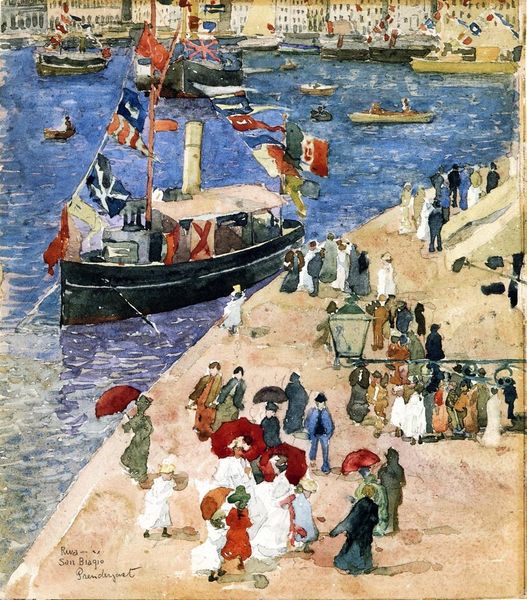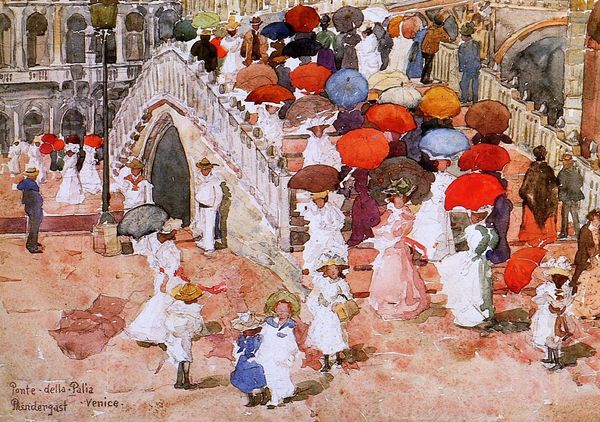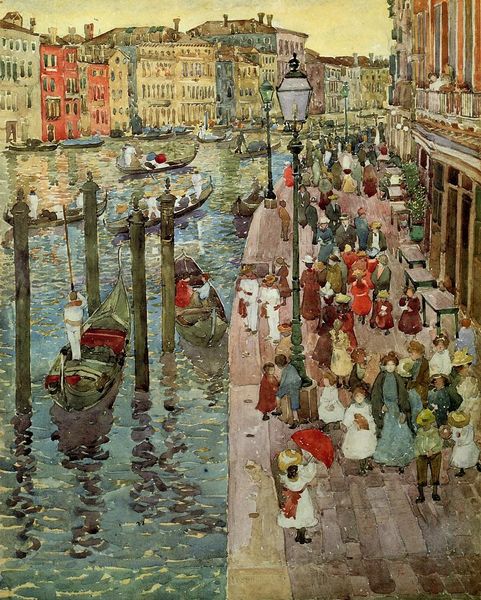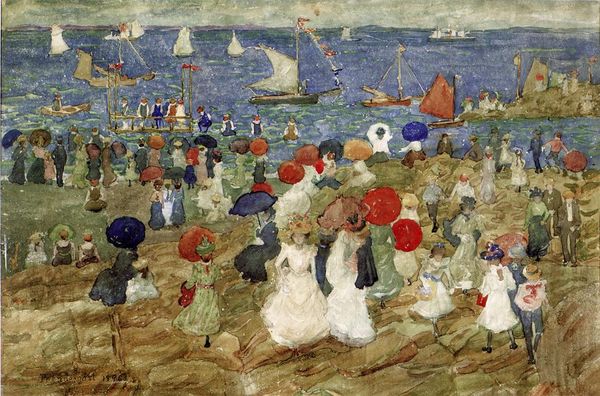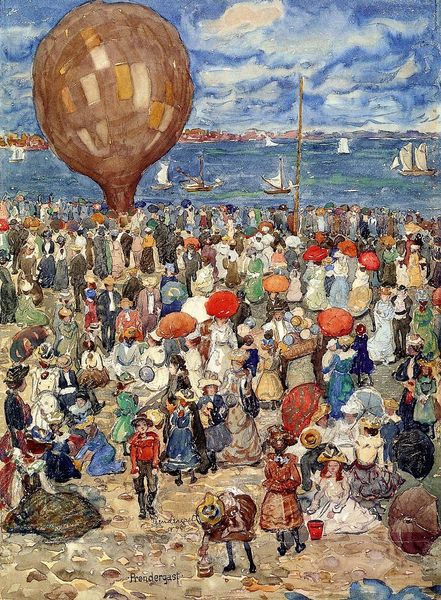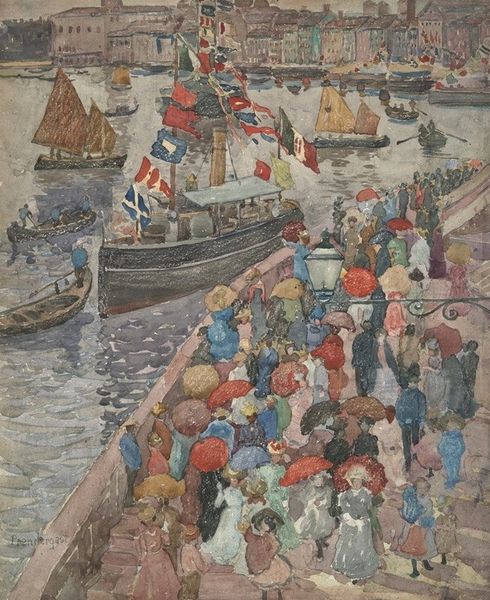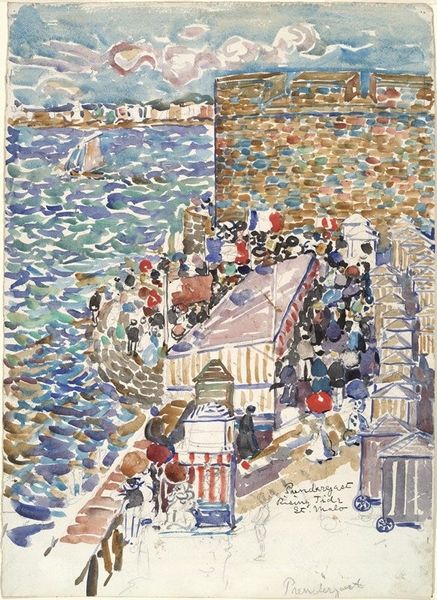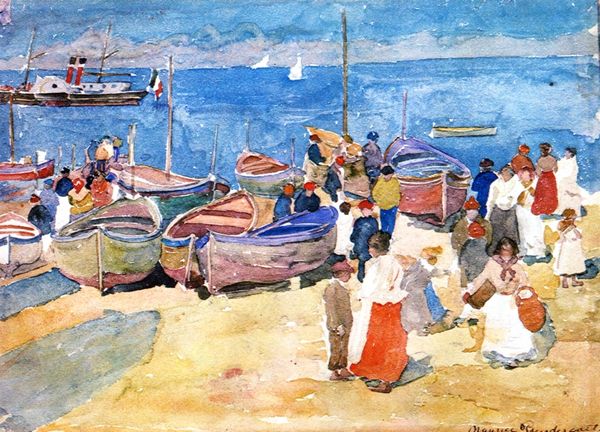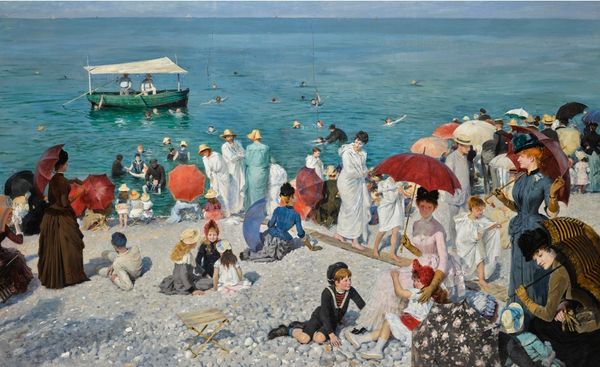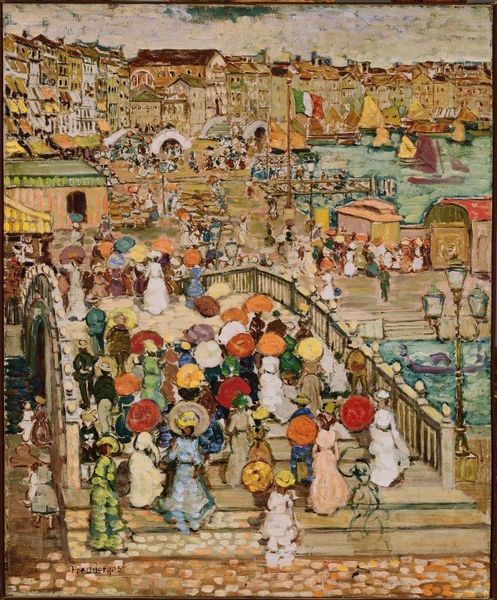
Dimensions: 45.09 x 35.88 cm
Copyright: Public domain
Editor: We're looking at Maurice Prendergast's "Ponte della Paglia," also known as "Marble Bridge," a watercolor created in 1899. It’s bustling with figures, mainly on a bridge, the energy really jumps out at you. How do you interpret this piece, looking at its composition? Curator: The rhythmic arrangement of forms commands immediate attention. Observe the calculated juxtaposition of light and dark, flat planes of color playing against areas of complex textural buildup, a strategy that imbues the surface with a tactile, almost mosaic-like quality. Do you notice how the orange parasols punctuate the composition, creating a visual echo? Editor: Yes, they really draw the eye upwards! Almost like musical notes across the staff. The use of watercolor also feels integral, giving a sense of lightness and immediacy. Curator: Precisely! Consider, then, how the very properties of watercolor – its fluidity, its capacity for blending and bleeding – serve the subject matter. The blurring of forms, the subtle gradations of tone: these all contribute to an evocation of atmosphere. Can we, perhaps, consider Prendergast’s structural approach more significant than subject matter here? Editor: So, is the goal not necessarily to show Venice as it is but to really engage with these elements and principles of design and push the properties of watercolor? Curator: I'd say that is a reasonable formal assessment. Prendergast constructs a visual experience centered on color, shape, and surface. By analyzing these individual elements and observing their interactions, we start to decipher the aesthetic rationale behind this work. Editor: This has highlighted the power of really looking at the technical and aesthetic properties of the work in an objective way, thanks! Curator: A pleasure. It is a skill that reveals deeper insights through careful observations.
Comments
No comments
Be the first to comment and join the conversation on the ultimate creative platform.
